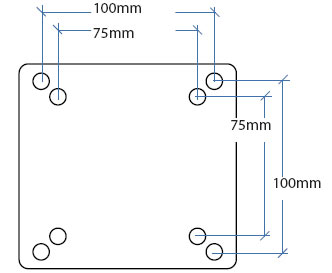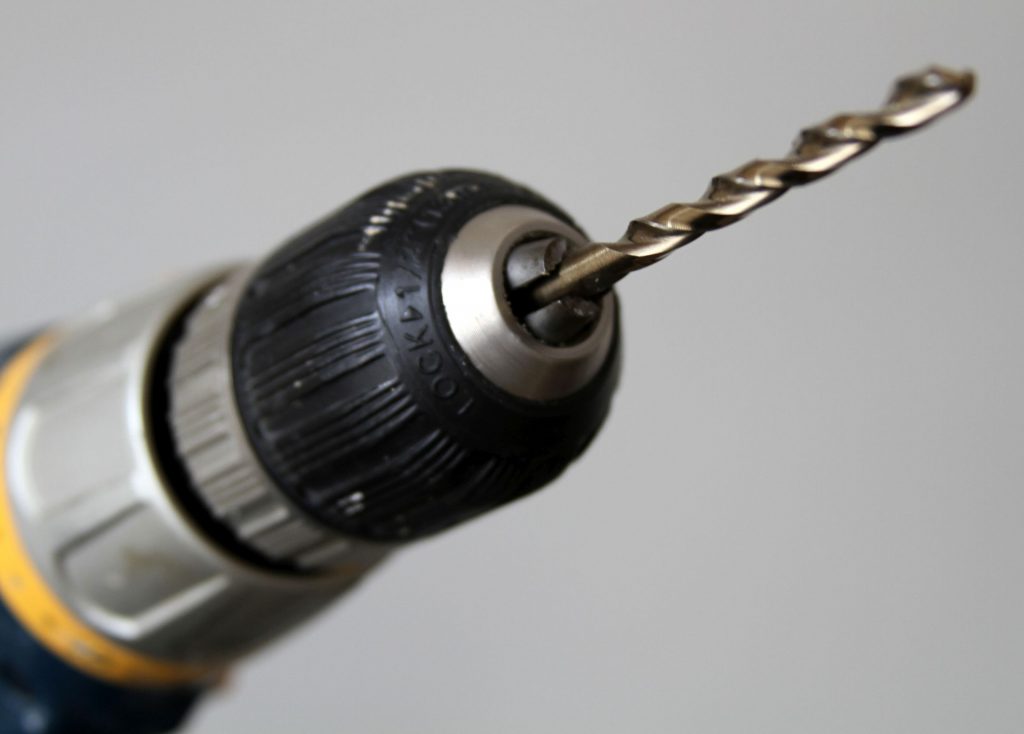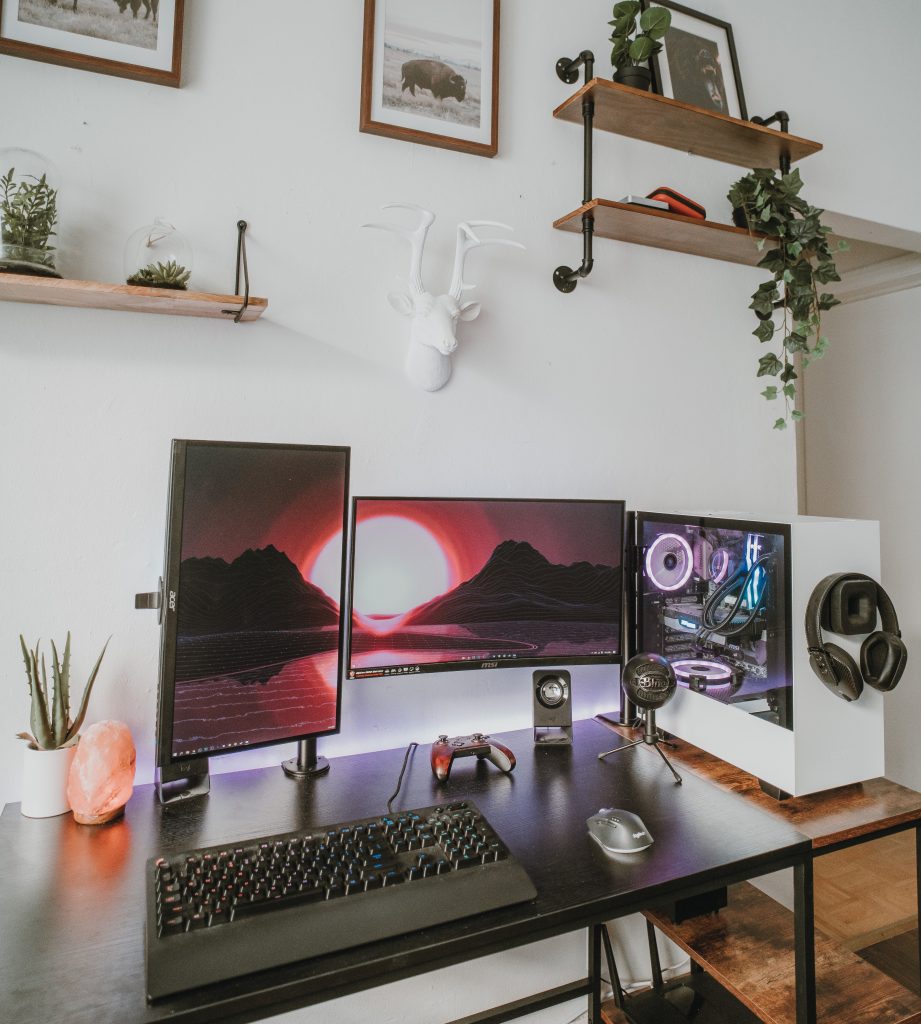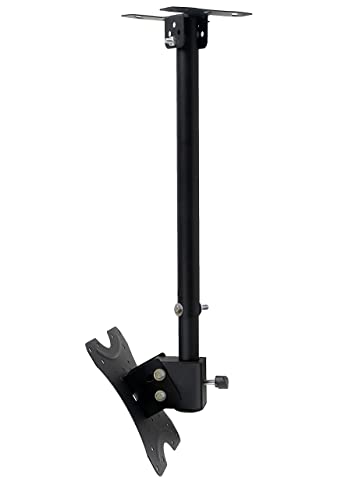Not only TVs can be mounted on the wall and thus seamlessly blend into the environment. The workplace can also be upgraded by appropriate wall mounts and arms and at the same time you can do something good for your back. Which monitor mounts are available, what you should pay attention to when mounting and what other alternatives there are, we have summarized here.
What do you need a monitor mount for?
Classically, the monitor is placed on the desk and every screen comes with a stand from the factory, which is why wall mounting does not come to everyone’s mind at first. However, the usually very large stands of many monitors take up a lot of space on the desk, leaving hardly any room for other things. Especially if you need a setup with several monitors, the desk is quickly too crowded. In this case, you can use one of the many mounts that quickly eliminate the monitor chaos on the desk.
The most common problem at a desk at work or in a home office is lack of space. First of all, the work surface of a monitor is no longer sufficient, which is why you can’t avoid buying a second monitor. Here, however, the next problem crystallizes: more monitors take up even more space. In addition, various utensils take up a lot of space on the desk, which is why there is usually no room for a second or even third monitor. With a wall mount, however, you can find a way to use a PC with multiple monitors even on the smallest desk.
There are clear advantages to using mounts compared to the classic setup. However, you usually only notice this when you get an overview of the many options that are now available.
If a monitor mount isn’t the right thing for you, there are still plenty of alternatives to raise your monitor, for example, and thus improve your general work on the PC. In the meantime, there seems to be a suitable option for every workplace to work more ergonomically correct or simply more organized.

Monitor arms in particular do not necessarily have to be drilled into the wall, as they can also be attached to the edge of a table using a screw clamp, depending on the model. This can be particularly useful for very small workstations that are also free-standing, such as in a treatment room of a doctor’s practice or at trade show booths.
In addition to that, a wall mount can be perfectly aligned to the respective user due to its various adjustment options, which makes the whole setup much more ergonomic. This protects the back in the long run, so that you can sit in front of the PC for much longer.
Types of wall mounts for monitors
There are different types of monitor mounts, which have their advantages and disadvantages. Before buying, you should therefore make clear where you want to mount the monitor and whether a permanent attachment to the wall makes sense or is even possible. In the meantime, however, there is a suitable mount for every workplace, which is why you should always find something suitable.
Flat monitor mount
A flat wall mount is completely sufficient for a simple installation on the wall. The monitor is mounted flat on the wall, which gives you a lot of space on the desk that you can use for other purposes.
However, mounting the monitor with a flat wall mount hardly gives it any freedom of movement. The screen can be tilted to the maximum, which is why a flat wall mount is especially suitable for first-time monitors or a second monitor that is to be mounted directly above the first.
It is important that you look straight at the screen so that the corresponding ergonomics are still given.
Swivel monitor mount
If the monitor should have more freedom of movement, it is worth buying a swiveling wall mount. This means that the screen no longer rests directly on the wall, but it can be aligned much better with the user. The monitor can now be excellently adjusted to the individual field of vision and the picture quality of a possibly poor viewing angle no longer suffers, as the position of the monitor can be perfectly adjusted.
Some swivel models have the additional function of adjusting the height of the monitor. This allows for an even better adjustment of the screen and such mounts are especially suitable for touchscreens, which should be adjusted exactly to the size of the user. High-quality models also have an integrated gas spring that makes it possible to slide the screen back and forth without resistance.
Pivotable monitor mount
Not every monitor can be rotated by 90° ex works, which is why many monitors cannot be used as portrait screens. However, a corresponding mount can remedy this. This way, even a non-pivot capable monitor can be converted into a portrait screen.
If the monitor still has corresponding sensors, the content is automatically adjusted depending on the orientation, which is especially the case with tablets.
Monitor desk mount
Monitor arms are very flexible to use, especially models that you can attach to the tabletop with screw clamps. This can be useful if you don’t want to or even are not allowed to drill into the wall and still want to mount a monitor instead of using its included stand.
Table arms can be completely adjusted just as flexibly as monitor arms that you can mount on the wall. Due to the screw clamps, you are not even necessarily bound to a table, but can also attach the mount to a shelf or similar objects.
Monitor arms are also popular for a second or third monitor at the workplace, as they can be adjusted completely flexibly.
Monitor ceiling mount
Depending on the workplace, a ceiling mount may also be a good way to attach a monitor. Many of these mounts not only tilt, but also swivel or adjust in height, making them extremely flexible.
The fact that they can be retracted means that they disappear almost without a trace from the ceiling and can be retrieved when needed. Such a mount is particularly suitable in rooms where a permanent mount can be too distracting, such as in the kitchen or bedroom.
Monitor combo mounts
Meanwhile, there are also various combination mounts that offer space for both a normal monitor and a corresponding space for a laptop.
However, it should be noted that a corresponding stability should be given and the workplace is also suitable for such a mount. Depending on which devices you attach to such a combination mount, the whole thing can quickly become very heavy.
In addition, there are also dual monitor mounts that comfortably hold two monitors side by side. These are especially perfect for a setup with two identical monitors and a manageable inch size.
Things you should pay attention to during assembly
VESA standard
The VESA standard plays an important role for wall mounts, which is why you should make sure that the screen has a corresponding mount before installing it. For this purpose, there are corresponding threaded holes on the back of most monitors, which are used to connect the screen to the wall mount.
There is a standard for the distance between the threaded holes, the so-called VESA standard, which has been defined by the Video Electronics Standards Association.
While there are different dimensions for TVs, the standard for monitors is usually 100 x 100, which indicates the vertical as well as horizontal distance of the threaded holes. This standard is also known as VESA MIS-D. When buying, make sure that your monitor has the appropriate VESA standard and also when buying the appropriate forest mount.
Always consider the weight of the monitor, because the wall mount should be able to hold it securely. If you are unsure, check the manual of the monitor or the manufacturer’s website.

Most monitors have the VESA MIS-D standard.
Mounting your monitor wall mount
If you’ve decided to wall mount, there are a few other things to consider besides the VESA standard before attaching the appropriate wall mount.

- First check the condition of the wall and also whether any power or water lines could be in the way. Not every wall is suitable for mounting, so check with the landlord beforehand if necessary or look at the building plans of the house.
- Since a monitor is much lighter than a large TV, the wall and the mounting bracket must also hold less weight. Nevertheless, you should definitely work with suitable dowels and screws, which are ideally included with the mount. A drill with impact, as well as a suitable drill, should also be available, as the appropriate equipment makes the work much easier.
- Draw the drill holes on the wall and use a level so that everything is straight. Then you can drill the holes and insert the dowels before screwing the bracket to the wall. The other part of the wall mount is connected to the monitor so that you can put everything together at the end.
For other mounts that do not require drilling, follow the appropriate instructions included in the original packaging. For a monitor desk arm, be sure to measure the thickness of your desk top beforehand to ensure the screw clamp will fit. For mounts for your laptop or tablet, you should know the inch size of the device.
YouTuber Carl Hewlett explains exactly how to mount a monitor arm on the wall in his video.
Alternatives to the classic wall mount
Monitor stands
While this article is about wall mounts and arms, those aren’t the only ways to better adjust your monitor to the user. In most cases, a simple raise is enough to bring the monitor to an ergonomic height, as the top of the monitor should always be at eye level.
Monitor raisers or stands that can be placed under the monitor on the desk are usually sufficient here. Many even come with various storage spaces so that you can also stow away various utensils.
Tablet holders
For tablets, there are various mounts that have been specially developed for these devices. Especially the special shape and size of a tablet make it possible that there is a seemingly infinite number of ways to integrate the screen into the work setup.
Here, the offer ranges from smaller arms that you can also clamp to the edge of the table, to stands or larger devices in which you can place, clamp or stand the tablet. The same applies here as with the screen mounts: The more mobile they are, the better they can be aligned to the user.
Most holders can also be easily transported and flexibly set up and taken down again in different places. Thus, you can also conveniently set up the tablet in the kitchen to use it as a recipe book there.
Laptop holders
For laptops, too, there are now many options for integrating the actually mobile device into the workplace. Different manufacturers also offer various models here, which sometimes come with an additional smartphone holder or also offer the possibility to work or gamble from the sofa or bed.
Many of the mounts can be conveniently put away after work, since they are often not permanently installed at the workplace. Furthermore, the holders can also be transported comfortably, so that you can even do things ergonomically on the laptop in a café without any problems.
However, for both laptop and tablet mounts, the appropriate inch size should be considered, although most mounts allow for a whole range of different sizes.
Monitor mounts as a useful extension

You never seem to have enough space on your desk. If you add several monitors that are essential for your work or hobby, it quickly becomes crowded and chaotic on your desk.
For these very reasons, mounts for monitors are real lifesavers that not only visually enhance your desk. Depending on the model, they can be optimally aligned to the user so that the workplace becomes more ergonomic and possible reflections can also be avoided.
Many mounts can also be set up and taken down quickly, so that you don’t have to work with the setup permanently. This makes your own workstation much more flexible and in times of home office, when you also want to finish work after work, it can be worthwhile to completely dismantle the workstation without much effort.
However, the most important point is that by attaching the monitor to the wall, there is finally more space on the desk. This way, you can stow away many other things and the workplace still remains tidy.








